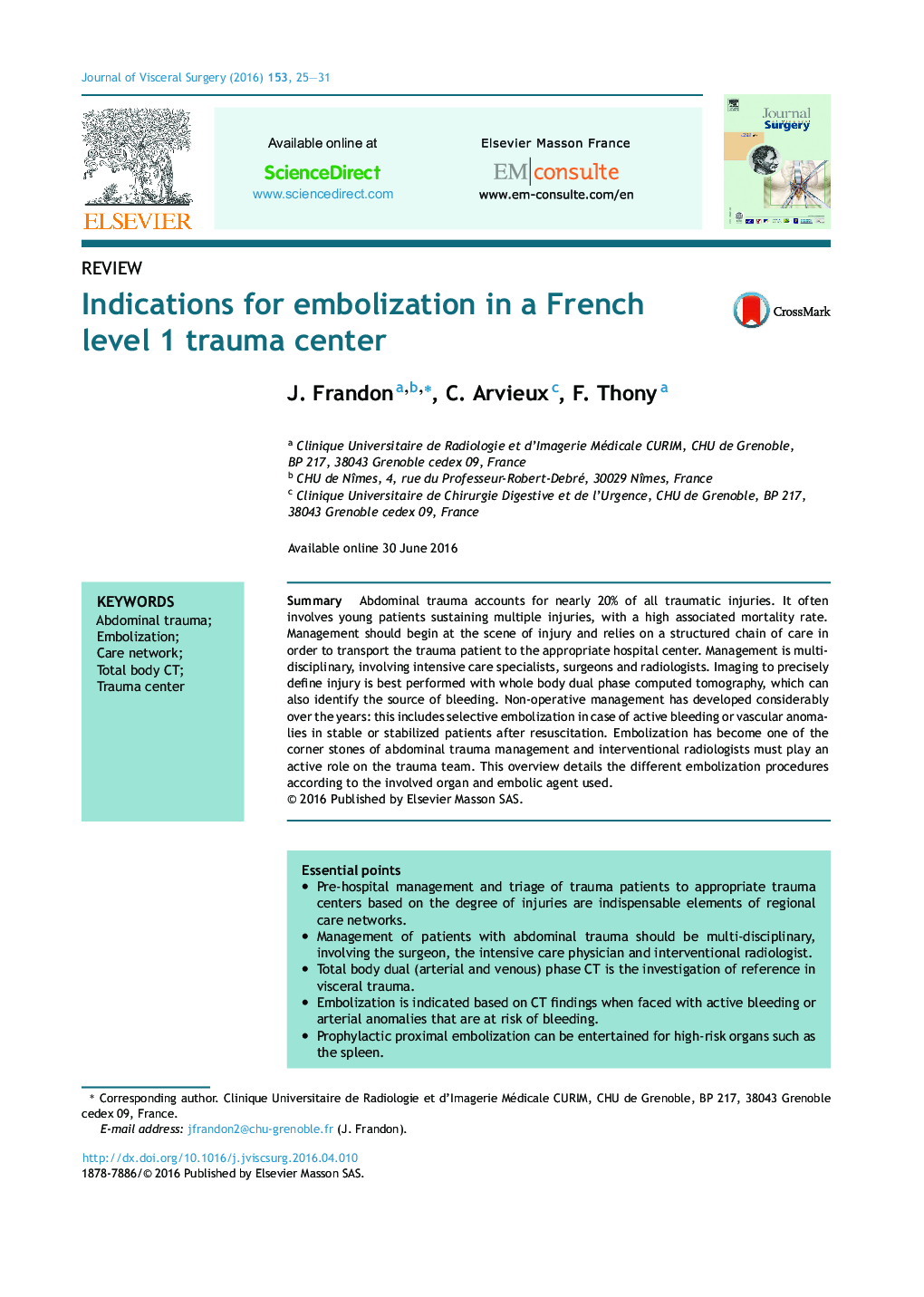| Article ID | Journal | Published Year | Pages | File Type |
|---|---|---|---|---|
| 3315713 | Journal of Visceral Surgery | 2016 | 7 Pages |
SummaryAbdominal trauma accounts for nearly 20% of all traumatic injuries. It often involves young patients sustaining multiple injuries, with a high associated mortality rate. Management should begin at the scene of injury and relies on a structured chain of care in order to transport the trauma patient to the appropriate hospital center. Management is multi-disciplinary, involving intensive care specialists, surgeons and radiologists. Imaging to precisely define injury is best performed with whole body dual phase computed tomography, which can also identify the source of bleeding. Non-operative management has developed considerably over the years: this includes selective embolization in case of active bleeding or vascular anomalies in stable or stabilized patients after resuscitation. Embolization has become one of the corner stones of abdominal trauma management and interventional radiologists must play an active role on the trauma team. This overview details the different embolization procedures according to the involved organ and embolic agent used.
